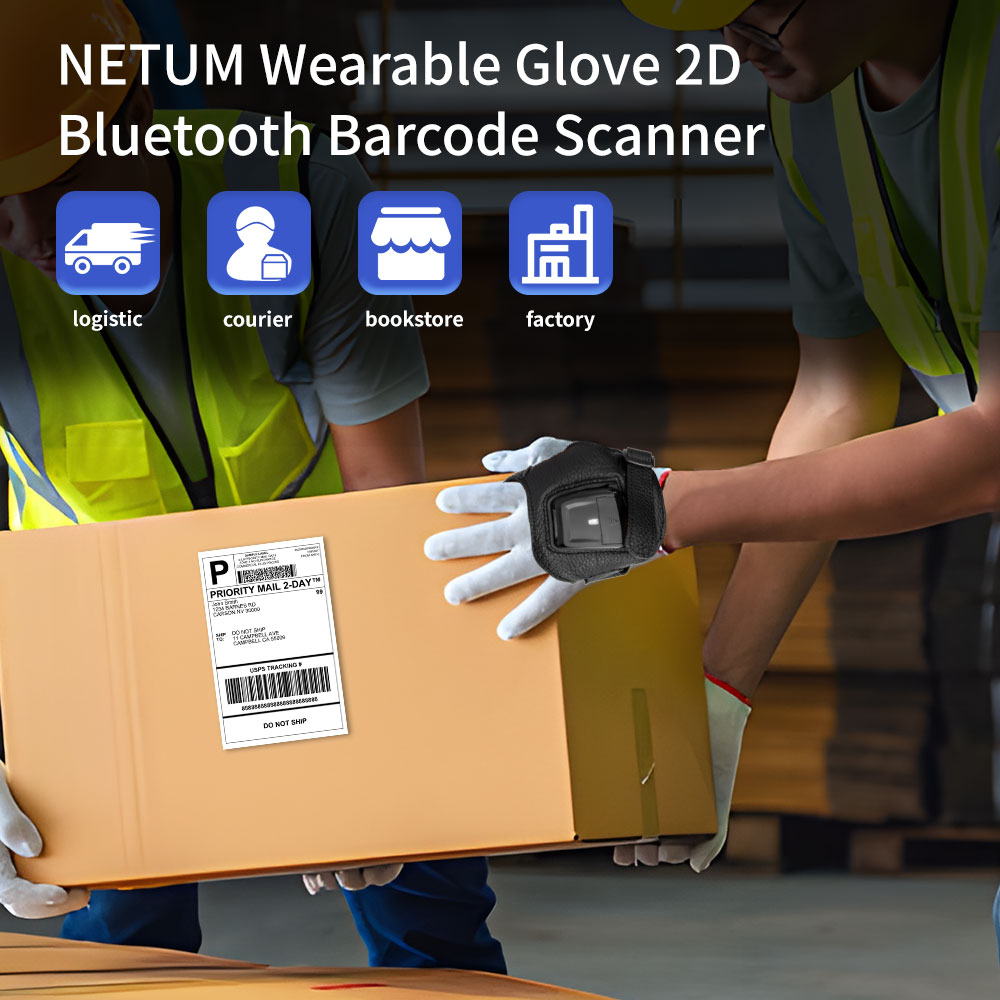1. Handheld barcode scanner: stable and reliable, suitable for routine tasks
Handheld barcode scanner have become standard equipment in the logistics industry due to their compactness, portability and simple operation. Finger barcode scanner are particularly suitable for tasks such as inventory counting, cargo tracking and package labeling, which can significantly reduce manual entry errors and improve data accuracy. Many high-end models also have wireless connectivity, long-lasting batteries and anti-drop design to adapt to complex environments such as warehouses and transportation. For example, a logistics company increased its order processing efficiency by 30% by replacing the paper system with a handheld barcode scanner scanning solution; another company completely eliminated shipping label errors with the help of this technology. However, holding a handheld barcode scanner for a long time may cause employee fatigue, and frequent manual operations may also affect overall efficiency in scenarios such as high-speed sorting.
2.Finger barcode scanner: free your hands and improve high-intensity work efficiency
Finger barcode scanners (such as ring-type or glove-type) optimize workflows through hands-free operation, and are particularly suitable for tasks that require two-handed collaboration, such as picking and packaging. Employees can complete the scan with just a tap, greatly reducing operational pauses and making the overall operation smoother. This type of device has fast scanning speed and high accuracy, Finger barcode scanner can effectively reduce data error rates, and is particularly suitable for high-frequency scenarios such as e-commerce warehousing and express sorting. However, its high initial cost may be a burden for small businesses; at the same time, battery life, system compatibility and employee training also require additional investment. For example, in large distribution centers, teams using Finger barcode scanner are usually 15%-20% faster than teams using handheld devices, but they need to ensure that employees adapt to the new operating methods.
3. Key selection factors: task type, budget and long-term benefits
When choosing a scanner, companies need to analyze it in combination with specific business needs. Handheld barcode scanner are relatively inexpensive and easy to deploy, making them suitable for teams with limited budgets or relatively fixed tasks, such as periodic inventory counts. Although the initial investment of Finger barcode scanner is high, in the long run, their improved operating speed and reduced labor costs can bring higher returns. For example, after a retail warehouse center switched to Finger barcode scanner, the order processing time was shortened by 25%, the customer complaint rate dropped by 40%, and the return on investment (ROI) was apparent within half a year.
4. Team adaptability and training: Ensure that the equipment is at its best
No matter which scanner is chosen, employee acceptance and proficiency are crucial. Handheld barcode scanner are intuitive to operate and have low training costs; while ring-type barcode scanners may require more systematic guidance to help employees adapt to the new working mode. Enterprises can adopt a phased promotion strategy, first test the applicability of the equipment on a small scale, and then adjust the deployment plan based on feedback. In addition, regular maintenance and software upgrades can also extend the service life of the equipment and ensure long-term stable operation.
5. Conclusion: Balance efficiency and cost, optimize logistics management
Handheld and ring barcode scanners have their own advantages and are suitable for different logistics scenarios. Handheld Barcode Scanner devices are more suitable for stable and intermittent tasks, taking into account both cost and reliability; Finger barcode scanner perform better in high-intensity and fast-paced operations. Enterprises should choose the most cost-effective solution based on their own budget, business needs and team adaptability, and maximize logistics efficiency and accuracy through effective training and continuous optimization, and ultimately enhance market competitiveness.


